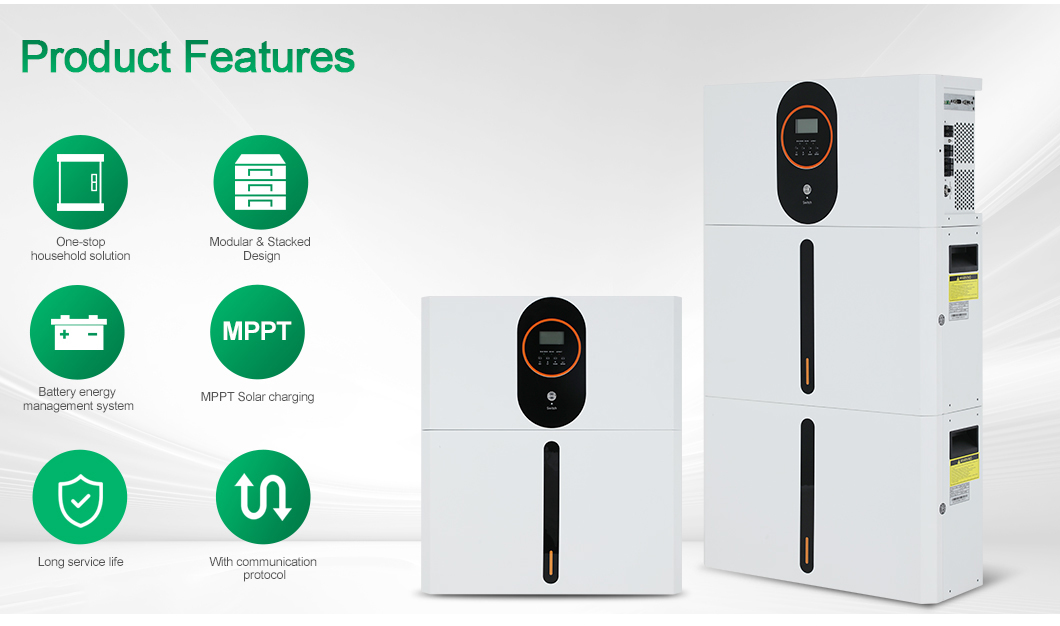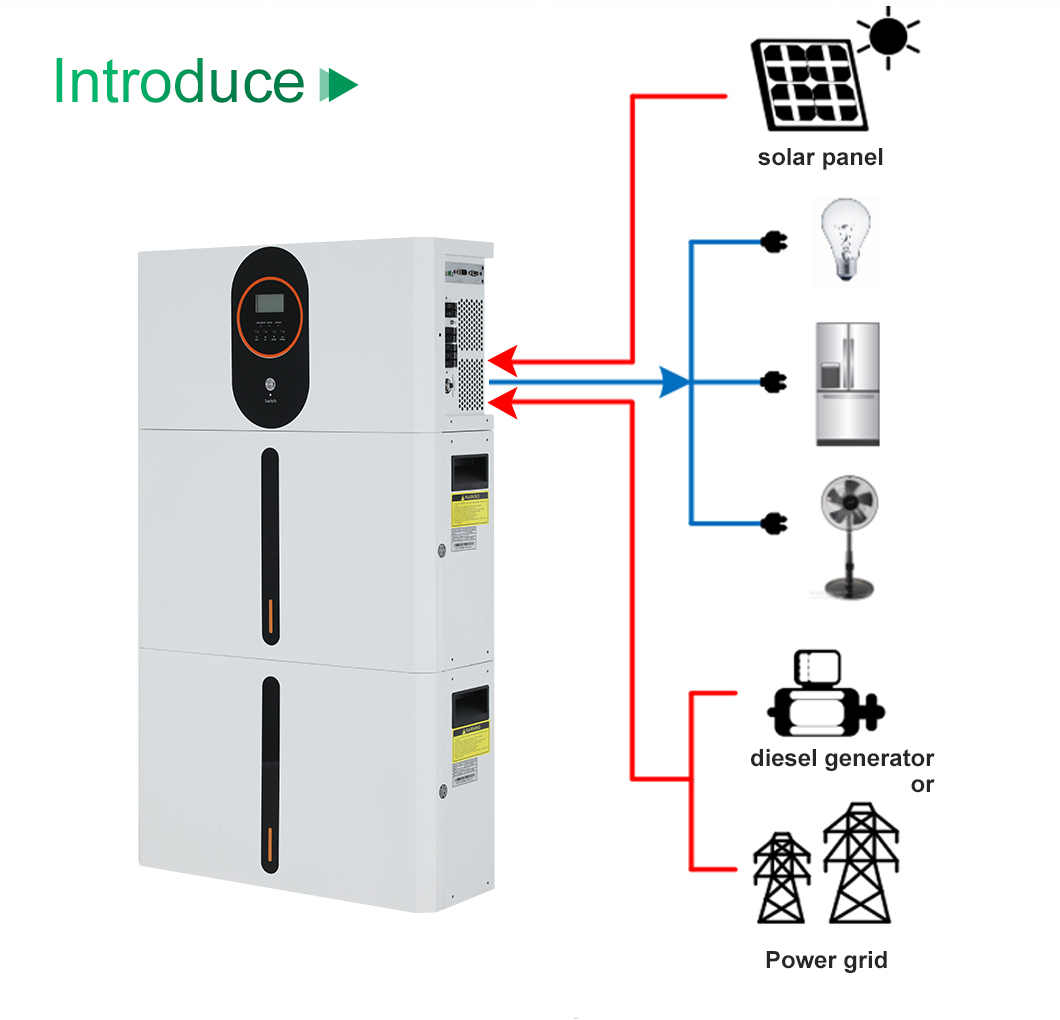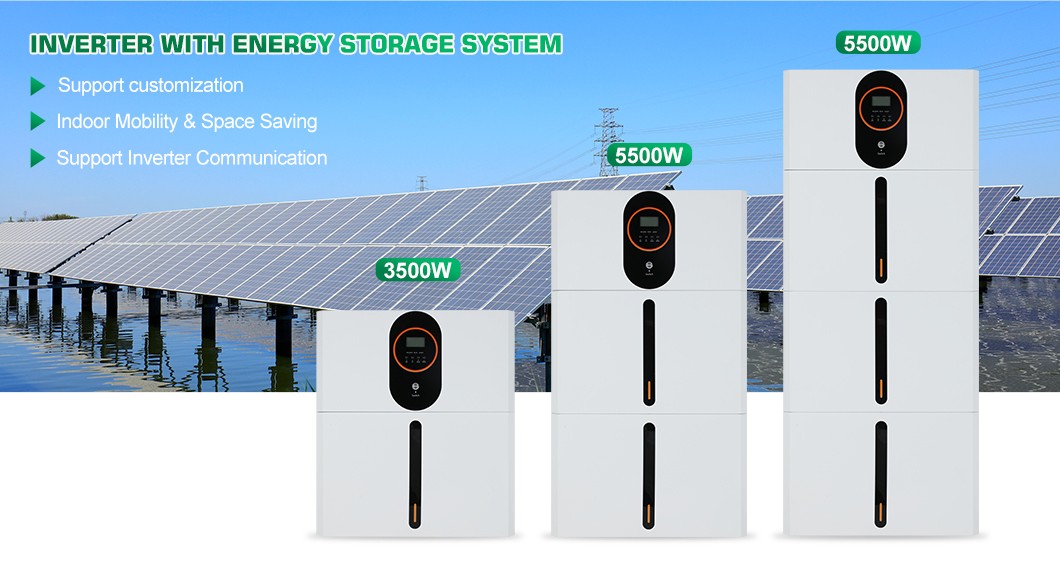What is user-side energy storage?
The main body of energy storage at the power end is power users, including industrial and commercial users and household users. The development of client-side energy storage helps to save the cost of electricity and ensure the stability of electricity consumption.solar energy storage systems.
Household energy storage
The household energy storage system, that is, the household energy storage, is usually used in conjunction with the household photovoltaic system, giving priority to meeting the household electricity demand during the day, and storing the surplus power in the battery, releasing the electricity at night or when the photovoltaic system is not working, so as to provide a continuous and stable power supply for the family, achieving energy self-sufficiency and cost savings.battery energy storage system.
By enhancing the proportion of household photovoltaic power generation for self-use, the household energy storage system effectively reduces household electricity bills, solar energy storage system.and ensures the continuity and stability of power supply in emergency situations such as extreme weather. For areas facing high electricity prices, significant peak-valley electricity price differences or aging power grid facilities, investing in household energy storage systems is not only economically rational, but also can stimulate the enthusiasm of household users to purchase energy storage equipment, and achieve the dual goals of economic benefits and energy security.
The core of the home energy storage system is its rechargeable storage battery, which is usually lithium-ion or lead-acid battery technology, intelligently controlled by the computer system, and works in collaboration with other intelligent hardware and software to achieve an efficient charge and discharge cycle. Such systems are often combined with distributed photovoltaic power generation systems to form an integrated home light storage solution, improve energy self-sufficiency and optimize home energy efficiency.
 The coupling mode of photovoltaic and energy storage system is mainly divided into DC coupling and AC coupling in two forms, DC coupling system is more suitable for the incremental market of newly installed photovoltaic system, because it can be directly connected with the DC output of photovoltaic panel, and AC coupling system is suitable for the stock market of installed photovoltaic system, which is easy to be compatible with the existing AC power grid or equipment. In addition, the home energy storage system can be divided into grid-connected systems and off-grid systems according to whether it is incorporated into the grid, and the core difference is whether it is connected to the grid. Grid-connected systems allow users to send power back to the grid when necessary, while off-grid systems operate completely independently of the grid. These systems adapt to different types of household needs according to their characteristics and functions, providing users with personalized energy solutions.home battery energy storage system.
The coupling mode of photovoltaic and energy storage system is mainly divided into DC coupling and AC coupling in two forms, DC coupling system is more suitable for the incremental market of newly installed photovoltaic system, because it can be directly connected with the DC output of photovoltaic panel, and AC coupling system is suitable for the stock market of installed photovoltaic system, which is easy to be compatible with the existing AC power grid or equipment. In addition, the home energy storage system can be divided into grid-connected systems and off-grid systems according to whether it is incorporated into the grid, and the core difference is whether it is connected to the grid. Grid-connected systems allow users to send power back to the grid when necessary, while off-grid systems operate completely independently of the grid. These systems adapt to different types of household needs according to their characteristics and functions, providing users with personalized energy solutions.home battery energy storage system.
Typical home energy storage systems are mainly composed of energy storage batteries, inverters, photovoltaic modules, etc., which account for about 48%, 24% and 22% of the equipment cost, respectively. In addition, household energy storage products need to be installed by the installer, and the installation fee is expected to be 12%-30% of the proportion of the equipment cost.
The global household energy storage market is expanding rapidly and is expected to reach 100 billion levels. Taking into account the growing demand and penetration of household energy storage in Australia, Japan, France, India, the United States and other countries and regions, if it is assumed that by 2025, the household energy storage market in Europe and the United States can occupy 40% of the global market, then it is expected that the new installed demand for global household energy storage in 2025 will reach 50GWh. To calculate that the value of each 10kWh energy storage system (including batteries and converters) is $10,000, the market value per GWh is equivalent to $1 billion (about 7 billion yuan). Therefore, it can be predicted that the future of the global household energy storage market will be extremely broad, with huge growth potential and commercial value.off grid energy storage system.

Industrial and commercial energy storage
Industrial and commercial energy storage as a key part of user-side energy storage, for users who do not use photovoltaic energy, its economy mainly through energy storage equipment to achieve the difference between peak and valley electricity price arbitrage; For users who have adopted photovoltaic systems, the cost of purchasing electricity can be reduced by increasing the proportion of spontaneous self-use, and at the same time, the energy saving and emission reduction of enterprises can be promoted. The profit model of industrial and commercial energy storage mainly includes energy time shift, arbitrage using the difference in peak and valley electricity prices, reducing capacity electricity costs and participating in demand response, etc. These methods provide enterprises with flexible energy management solutions and increase economic benefits.

The main application scenarios of industrial and commercial energy storage
Industrial and commercial energy storage systems play an important role in a variety of scenarios, such as industrial parks, data centers, communication base stations, government office buildings, shopping malls and hospitals. Especially in industrial parks, due to its vast roof area and the overlap of photovoltaic power generation peak and consumption peak, the configuration of the combined optical storage system can not only significantly reduce the cost of power purchase, reduce the impact of photovoltaic power generation on the grid, but also reduce the economic loss caused by power deviation in the market transaction of electricity, becoming a typical and efficient scenario in industrial and commercial energy storage applications.

